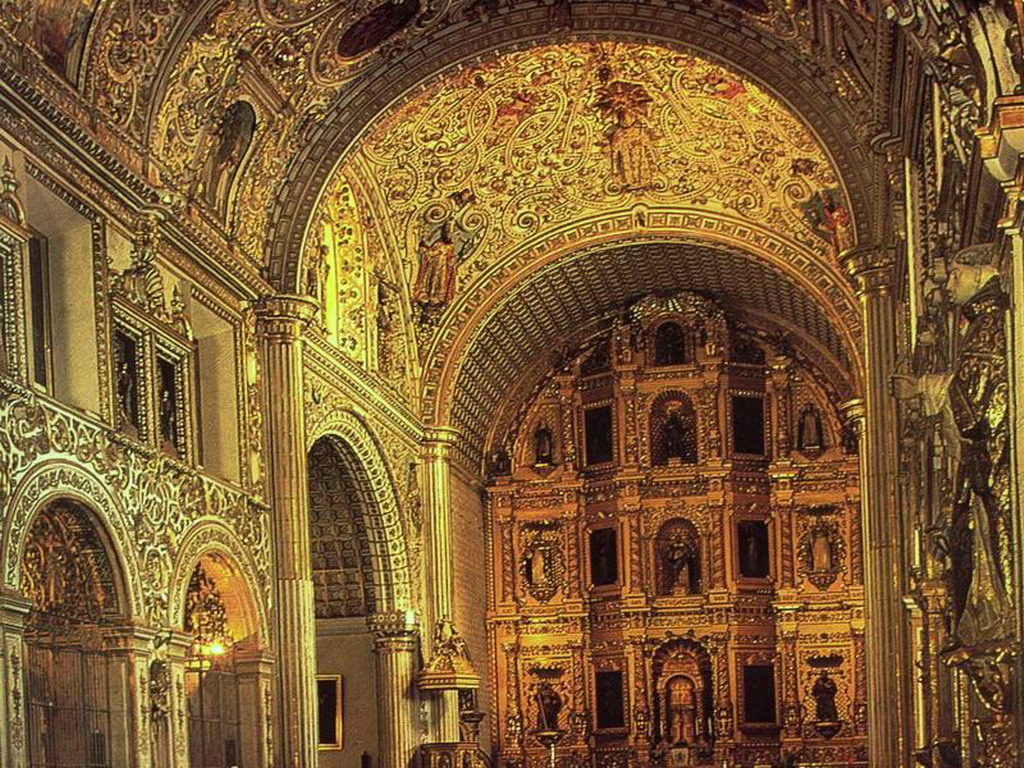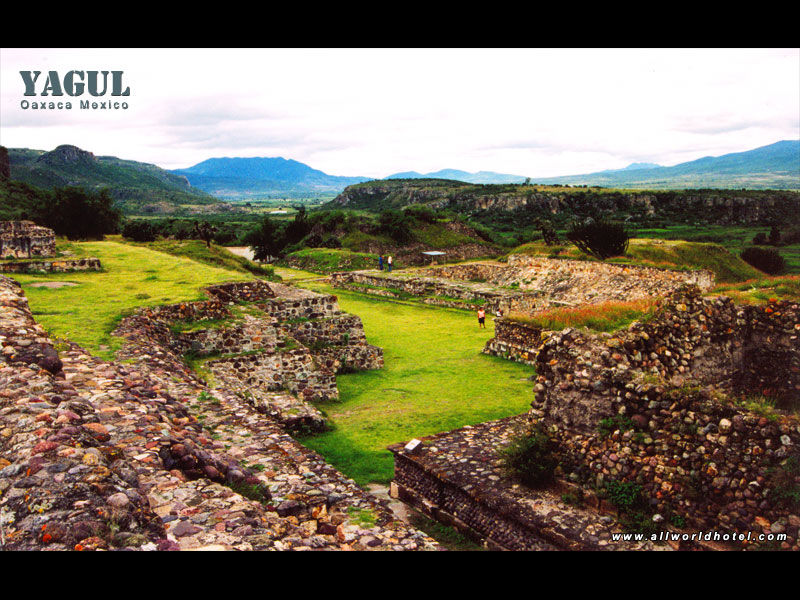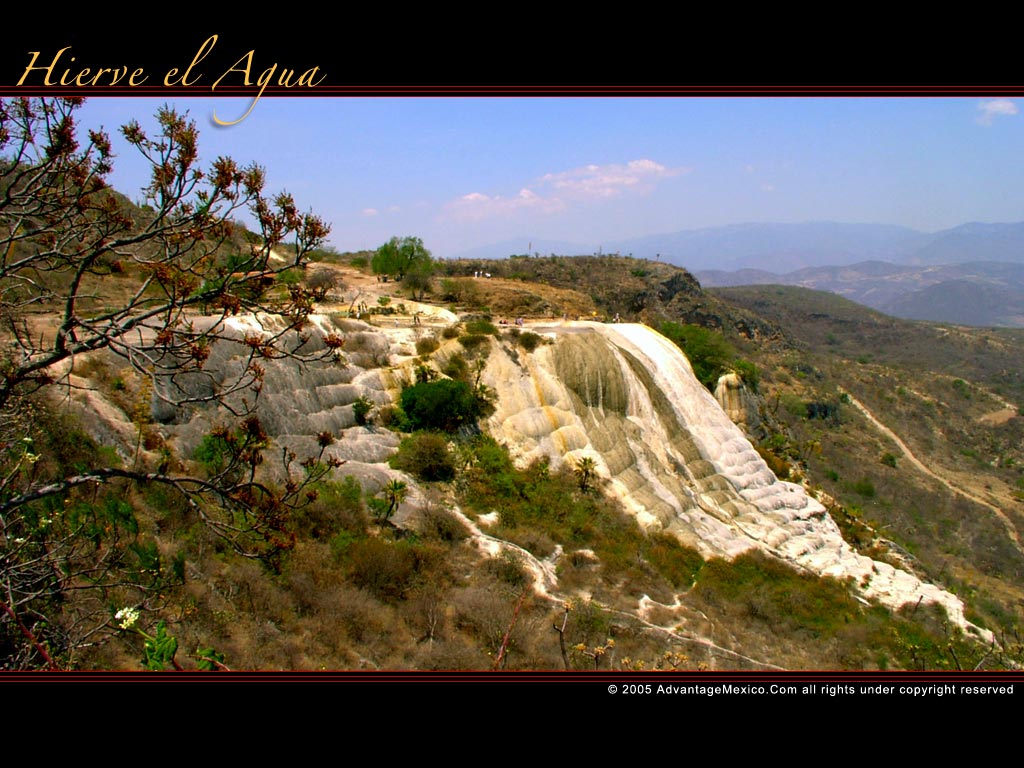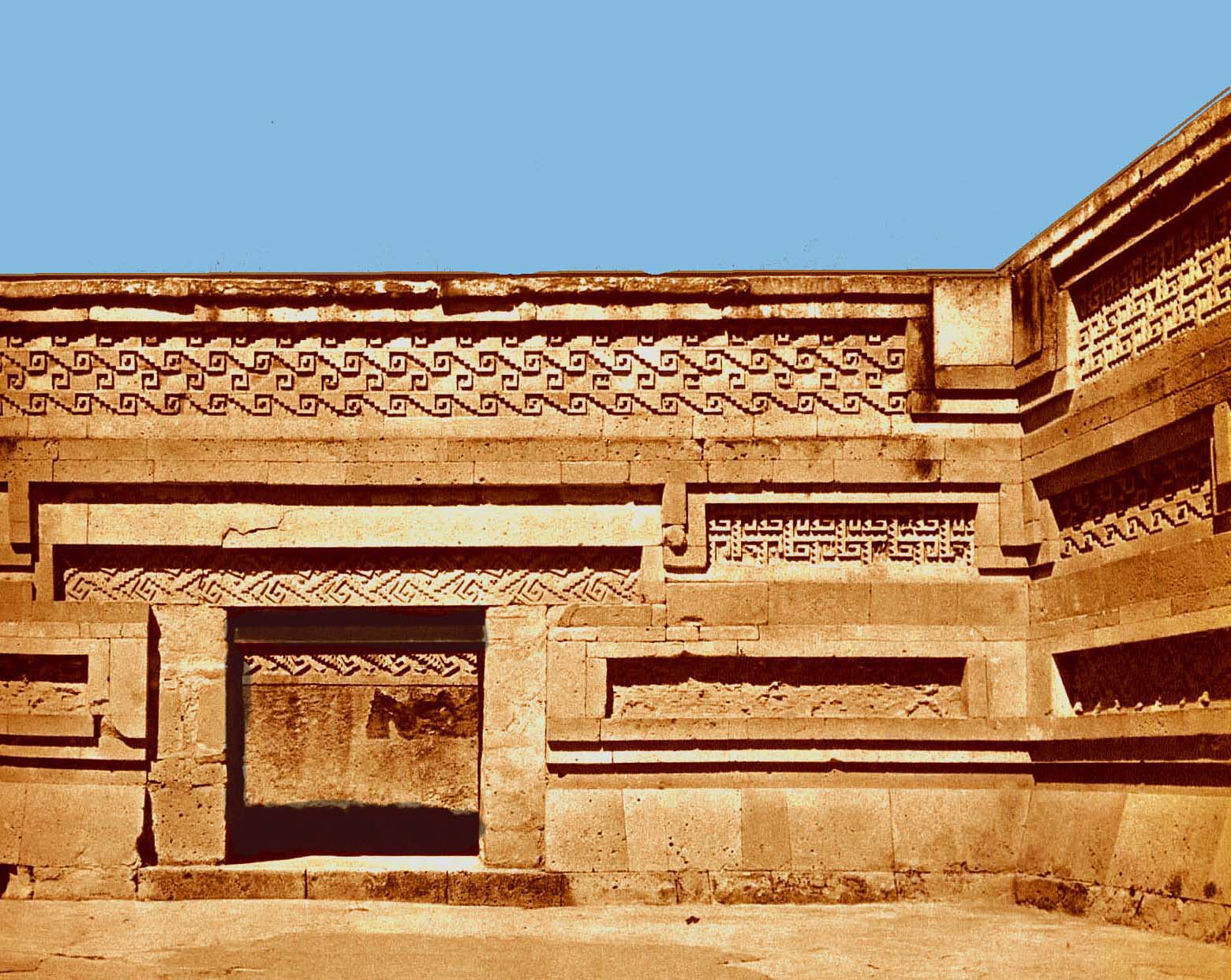- Archaeology
This archeological site was the ancient Zapotec capital and one of the first cities in Mesoamerica. It was also one of the most populous cities in Mesoamerica during its peak (it had more than 25,000 inhabitants). It was founded around 500 B.C. and flourished up to around A.D. 750. Located in the center of the Valleys of Oaxaca, Monte Albán exercised political, economic, and ideological control over the other communities of the surrounding valleys and mountains. The main attractions here are: The Great Plaza, The Ball Court, System II, The Danzantes, Building J, Central Buildings G, H, and I, The Palace, The South Platform, System 7 Deer, and Tomb 7. The Great Plaza is 200 meters long by 200 meters wide. To build the Great Plaza rocky bulges were trimmed off and depressions were filled in.
○San Pablo Villa de Mitla Mitla is home to a world famous Zapotec ceremonial center whose name in Náhuatl means inframundo (place of the dead). The Zapotecs called it lyobaa (place of burials). Mitla was home to some of the Zapotec priestly class and was first inhabited during the Classic period of Monte Albán (100-650). Mitla reached its zenith during the Post-classic period (750-1521). The city was built around five archaeological groups: Las Columnas, La Iglesia, El Arroyo, Los Adobes, and El Sur.
○Lambityeco
Here there is a recently excavated archaeological site that was inhabited during Monte Albán IV (A.D. 600-750) whose name means mounds for stills. (Salt was distilled from a naturally occurring salty dirt found here). There are buildings constructed partly in stone and partly in adobe, with the exception of a flat-topped pyramid (probably the site of a Zapotec market) that is covered with carved stone. The upper part displays an array of intricate geometric figures. Lambityeco is 28 kilometers from Oaxaca City, just off Federal Highway 190 heading toward the Isthmus.
○Yagul
This important prehispanic center (whose name means stick or old tree) has the largest ball court of the Oaxacan region and the second largest in Mesoamerica. The most interesting structure in Yagul is the Palace of the Six Patios, an intricate structure composed of numerous rooms with a complex distribution and intercommunication that leads us think that it could have been a governmental residence. The hill-site of Yagul is 36 kilometers from Oaxaca City, and a few kilometers off and uphill from Federal Highway 190 heading toward Tehuantepec.
- Historical Center
The Oaxacan State Government fosters the manufacture of handmade crafts through the Handicrafts Institute of Oaxaca, better known as ARIPO, whose main responsibilities are the promotion and organization of local crafts and the commercial development of them.
With this venture in mind they offer to businesses from all over the world the services of secure storage and the packaging of goods of optimum quality at a good price. ARIPO suggests the most secure and affordable means of shipping according to each destination; they also facilitate exportation and billing. The main center in Oaxaca City is on 809 García Vigil.
◘The Macedonio Alcalá Tourist Walkway
This street is neatly paved with rectangular cantera (quarry-stone). It was closed to vehicular traffic and converted into a pedestrian walkway in 1985. The street is flanked by colonial buildings such as those that hold the Public Library, the Monte de Piedad (pawn shop), the Museum of Contemporary Art, the former State of Oaxaca Institute of Sciences and Arts Building (today part of the Universidad Autónoma Benito Juárez), and diverse shops, restaurants, and craft stores.
◘The Church and Ex-convent of Santo Domingo
The Church of Santo Domingo opened for worship in 1608 and is one of the best examples of baroque architecture in Mexico. The genealogical tree of Santo Domingo de Guzmán (founder of the Order) is outstanding. It is done in gilded and polychrome plasterwork upon the ceiling of the sotacoro (the area under a raised choir). The arched vault of the main nave is also spectacular and has thirty-six paintings depicting passages from both the Old and the New Testament. Oaxacan artists rebuilt the splendid, gilt baroque retable in 1959. The eighteenth-century Capilla del Rosario (annexed to the church) is an architectural jewel dedicated to the Virgin of the same name. Within it there are paintings of the Virgin and of Christ. The joyful, painful, and glorious “mysteries” of the rosary are depicted upon the walls of the church, and upon the ceiling of the choir.
◘The Macedonio Alcalá Theatre
This beautiful building dates from the beginning of the twentieth century and preserves the Francophile sentiments in vogue at the time. Originally there was a casino annexed to the theatre. The principal access to the theatre is through a lobby built in the Louis XV-style, which has a staircase of white marble and walls of the same color with insets showing musical and poetical allegories. The Triumph of Art is represented on the ceiling of the main room.
◘The Zócalo
Juan Peláez de Berrio laid out the Plaza de la Constitución, better known as the Zócalo in 1529. Later, Alonso García Bravo used it as a reference point while laying out the main urban grid of the Villa of Antequera (now Oaxaca City). During colonial times the Zócalo was neither paved nor had benches; a marble fountain was erected in 1739. In 1857 this fountain was removed to make way for the first kiosk, which was replaced in 1901 with the current modernist or art nouveau kiosk. The Zócalo is decorated for street fiestas held for the city's teeming populace, especially for 23 December (the night of the Radish Festival), 24 December (Christmas Eve), and 15 September (the Grito de Dolores). At night you can enjoy musical events that are offered on one night by the local band ensemble (brass, drums, etc.) and on the next night by the State Marimba Band.
◘The Llano Park
Paseo Juárez (El Llano) is one of the oldest and largest parks in the Centro Histórico. General Morelos created it to commemorate the civic-religious festival that celebrated the victory of the Movement of Independence. In 1894 a monument with a statue of Benito Juárez was placed in the park. The monument is characterized by its nationalist style of architecture. During the middle of the twentieth century the park served as zoo, which was closed in 1970, the year that the park was redesigned as it is at present. The park is located in the northwestern part of the Centro Histórico, in front of the Church of Guadalupe. El Llano is approximately 250 meters long and 75 meters wide. It has gardens, walkways, benches, and four large fountains.
























